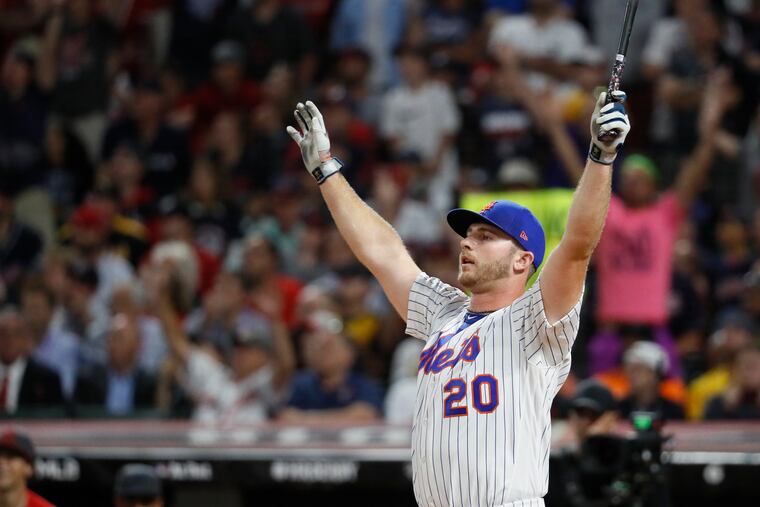Juiced balls squeezing the life from baseball’s magical balance | Bob Ford
The folks in the commissioner’s office say the ball hasn’t been intentionally doctored, but MLB purchased Rawlings last June and you can connect those dots any way you like.

In the earliest days of the professional game, it was not uncommon for pitchers to make their own baseballs. This was a practice rife with potential conflict of interest, as you can imagine, but the manufacture of sporting goods, like the sport itself, was still in its infancy as a commercial industry.
The best at the craft of stuffing and stitching a leather cover was Albert Goodwill Spalding, known as “Al” to his friends, most of whom were probably not hitters on other professional teams. In 1875, Spalding recorded a record of 54-5 with a 1.59 earned run average for the Boston Red Stockings of the National Association, requiring a mere 570.2 innings of work to do so.
Spalding retired in 1877 just before his 27th birthday to concentrate on the burgeoning sporting goods company that would provide the baseballs for major-league play until 1976, when Rawlings, then owned by Spalding, became the trademark on the cover.
It is unknown exactly what Al used to stuff the baseballs in the early days, but whatever it was worked out well for him. He retired with 252 wins in 325 starts and a career ERA of 2.13. Opposing batters did not try to talk him out of the decision.
Spalding was a stickler for rules, however, and he eventually codified the weight and dimensions of the official ball – 5-5.25 ounces and 9-9.25 inches in circumference – and in 1910 made the first standardized ball with a rubber-coated cork center, yarn windings and double figure-eight cover that is recognizable today. Justin Verlander would probably enjoy pitching with it.
The ball looks pretty much the same, but it has been through several evolutions over time, and has again become a subject of discussion because there is significant evidence that it is considerably livelier than it was just a few years back. At the All-Star break, major-league batters were on pace to hit 6,668 home runs this season, which would not only break the record set two years ago by more than 500 homers, but would represent a jump of just shy of 1,000 home runs above the 5,693 hit in 2000 at the absolute apex of the Steroid Era.
“Major League Baseball is turning this game into a joke,” said Verlander, who was the American League starting pitcher in the All-Star Game.
Verlander has allowed a major-league high 26 home runs this season, so that might have him a bit chapped, but pitchers across the game are complaining that the ball is smaller, slicker, harder, and the seams have been lowered to decrease wind resistance as they fly toward the far reaches of stadiums.
“You could have just stamped ‘Titleist’ on the sides of these things,” Chicago Cubs manager Joe Maddon said.
For their part, the folks in the commissioner’s office say the ball hasn’t been intentionally doctored, but MLB purchased Rawlings last June and you can connect those dots any way you like. There is a good deal of hip-pocket science out there about changes to the core and the windings, but while the weight and size of the ball remains the same as instructed by Spalding, something has definitely changed.
Well, what of it? Who doesn’t like a nice home run, aside from Verlander and his compatriots on the mound?
Baseball was thrilled when the Steroid Era of bashball rescued the game from its malaise following the 1994 World Series cancellation, and if the players can’t be juiced any longer (as if), then messing with the ball is the next best thing to inject excitement and offense.
The problem is that playing with a hot ball only exacerbates the game’s infatuation with the analytics-driven trend toward turning every swing into an uppercut and devising a sport in which striking out while trying for a home run is considered preferable to choking up and hitting an opposite-field single.
Every fan is entitled to his or her own opinion about what makes a game exciting, but narrowing baseball, which holds the possibility of almost limitless outcomes with each at-bat, to just two likely outcomes, is a pretty boring option. Major League Baseball is on pace to break the season strikeout record for the 11th straight year, with an additional 1,100 projected this season, and there will once again be more strikeouts than hits when the season ends. That happened last season for the first time in history.
What the game’s leaders are telling its customers is that they don’t believe enough in the product to trust it can hold the interest of the marketplace. Baseball, if that is indeed their philosophy, has to be tarted up to the point where it is a pinball game in which each play is either the flashing-light bonus or “tilt.”
Maybe they’re right, and only the crack of a home run off the bat will stir fans to look up from their phones. The game is feeding them a sugar rush at the price of what was a more well-balanced game, one in which little things could matter. “Small ball” is so small now you can’t find it with an electron microscope. Perhaps each team should simply play a Home Run Derby 162 times, interrupted only by a short July break during which a regular game were held.
To me, baseball would be better off if the ball were toned down rather than juiced up. Not toned down to the point of stuffing it with Al Spalding’s socks, but just enough so that the likelihood of a home run wasn’t so high that all else is ignored in its pursuit.
Either that, or every other inning pitchers should be allowed to use a ball they made themselves. They would go for that.